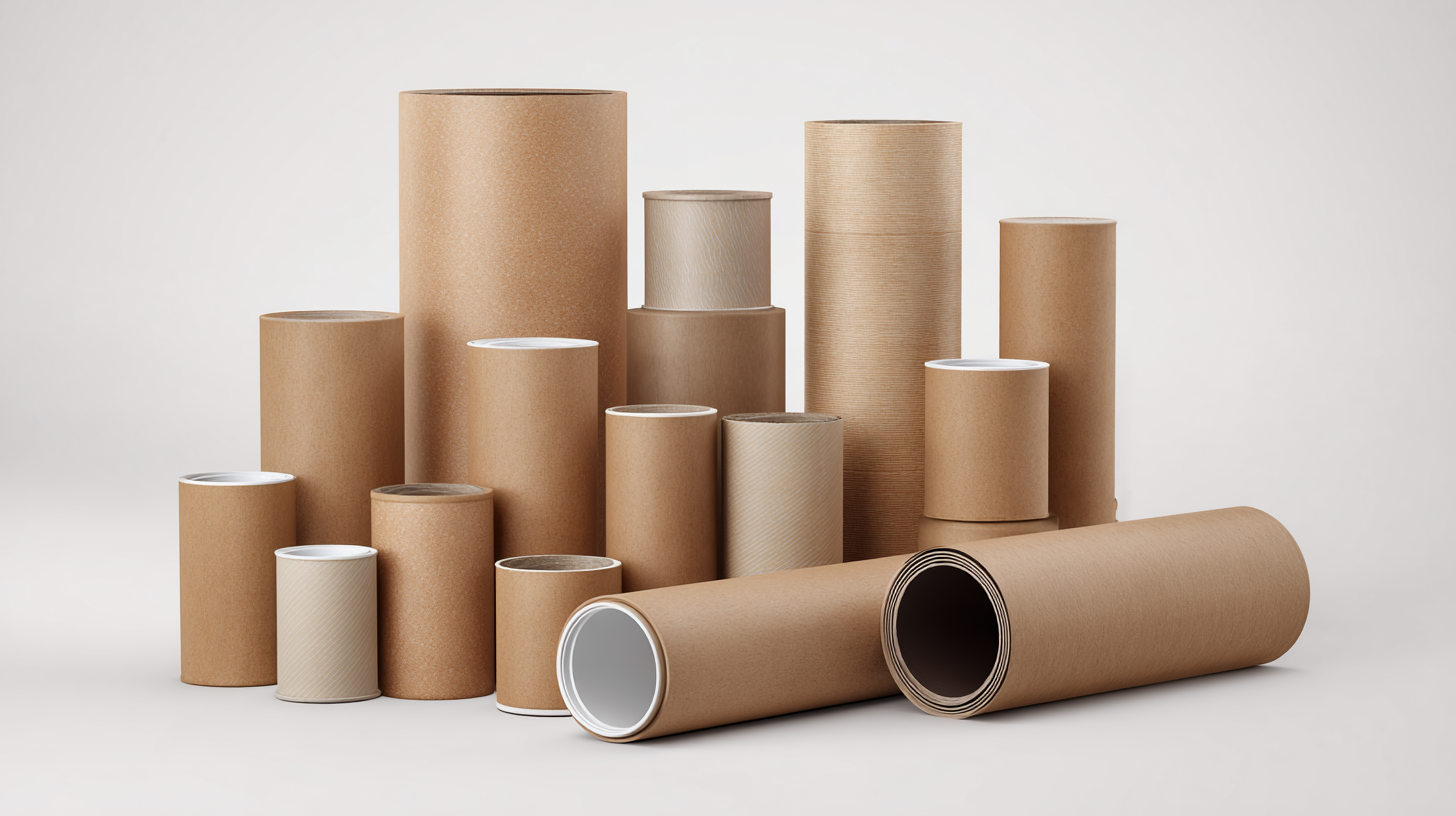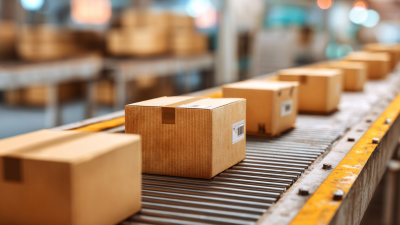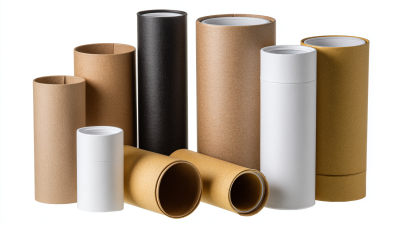Exploring the Best Postal Tube Sizes for Your Shipping Needs and Custom Projects
In today's fast-paced e-commerce environment, selecting the right postal tube sizes is crucial for businesses and individuals alike. According to a recent report from the Packaging Industry Association, demand for mailing solutions has surged, with shipping volumes increasing by over 30% in the past year alone. This trend underscores the importance of efficient packaging that not only protects contents but also minimizes shipping costs.

Understanding the various postal tube sizes available can greatly enhance your shipping strategy, allowing for tailored solutions that accommodate unique project requirements, whether for artwork, documents, or promotional materials. By optimizing packaging choices, businesses can achieve significant savings in logistics and improve customer satisfaction through better product presentation, ensuring that items arrive in pristine condition.
As we explore the best postal tube sizes for your shipping needs and custom projects, this guide will provide valuable insights and tips for making informed decisions.
Understanding Postal Tube Varieties: An Overview
When it comes to shipping art, documents, or fragile items, understanding the varieties of postal tubes is crucial. Postal tubes are predominantly made from cardboard or plastic, designed to protect the contents from bending and damage. According to the Packaging Institute, approximately 70% of all shippable items are better protected when rolled, making postal tubes an ideal choice for various products. With a range of diameters and lengths available, choosing the right size can enhance protection while optimizing shipping costs.

When selecting the correct postal tube, consider the dimensions of your items. A standard 3-inch diameter tube is suitable for most posters and prints, while larger projects, like textiles or blueprints, may require a 6-inch diameter tube. Additionally, it's essential to account for the weight of the contents; ensuring the postal tube can support heavier items without risk of bursting.
Tips: Always measure your items before purchasing postal tubes to avoid unnecessary returns. Opt for tubes with a wider diameter for thicker materials to prevent crumpling. For added moisture protection, consider tubes with a plastic lining, especially for documents exposed to various climates during transport.
Selecting the Right Postal Tube Size for Different Shipping Needs
When selecting the right postal tube size for different shipping needs, it’s essential to consider the specific dimensions and weight of the items you plan to ship. Postal tubes are versatile and ideal for sending documents, blueprints, artwork, or fragile goods requiring protection during transit. For smaller items, a standard tube measuring around 2 to 3 inches in diameter may suffice, while larger items may require tubes ranging from 4 to 6 inches to accommodate length and girth.
Additionally, choosing the best postal tube size can help optimize shipping costs. Many shipping companies offer bulk options which can significantly reduce per-unit costs when you have multiple items to ship. It’s also beneficial to explore different sources for affordable shipping supplies, including postal tubes. As sustainable packaging becomes increasingly important, consider eco-friendly options that not only meet your shipping requirements but also align with environmental values.

Custom Projects: How to Choose the Perfect Tube Dimensions
When embarking on custom projects, selecting the perfect postal tube dimensions is critical for ensuring the protection and presentation of your items. A study by the Packaging Industry Association indicates that over 35% of product returns are attributed to inadequate packaging. Thus, understanding the specific requirements of your project—such as the material, diameter, and length of the tube—can significantly influence your shipping efficiency and product integrity.
For instance, if your project involves rolled artworks or blueprints, opting for larger diameter tubes (around 3 to 4 inches) can accommodate the thickness of the items while minimizing creases. Conversely, for smaller prints or documents, a diameter of 2 inches may suffice. Additionally, the length of the tubes should be tailored to the dimensions of your items; tubes with adjustable lengths have gained popularity, allowing for flexibility without compromising on material strength.
According to recent data from the International Air Transport Association (IATA), ensuring the right fit not only enhances protection but can also reduce shipping costs by diminishing dimensional weight charges, thereby optimizing your shipping strategy for both budget and efficiency.
Best Practices for Packing and Shipping with Postal Tubes
When it comes to packing and shipping items using postal tubes, adhering to best practices is crucial for ensuring that your contents arrive safely and in pristine condition.
First and foremost, choosing the correct size of the postal tube is essential. Select a tube that fits your item snugly without excessive space, which can cause movement during transit. For delicate materials, consider wrapping them in bubble wrap or packing paper before placing them in the tube. This added layer helps to cushion the items and protect them from potential damage.
Additionally, securing the ends of the postal tube is just as important as the packing itself. Use strong tape to seal both ends thoroughly, preventing any debris from entering the tube. It’s advisable to label the tube clearly, indicating the contents and the shipping address in a legible manner. If you're shipping valuable items, investing in insurance can also provide peace of mind.
By following these best practices, you can streamline the shipping process and ensure your packages reach their destination safely and efficiently.
Cost-Effectiveness of Different Postal Tube Sizes for Your Business
When selecting postal tube sizes for shipping and custom projects, cost-effectiveness becomes a crucial factor for businesses. With the projected growth of the global hydrogen tube trailer market from $340.6 million in 2023 to $557.5 million by 2030, at a CAGR of 7.3%, understanding the economics of packaging is more important than ever. The increasing costs of materials, such as corrugated cardboard, heighten the need for budget-friendly shipping solutions in 2025.
Research indicates that rising postal rates, including a recent increase of up to 51% for services like Priority Mail, have made it imperative for businesses to assess their shipping methods critically. Many companies are seeking out alternative packaging options that not only meet their shipping specifications but also provide significant savings. As postal services adjust rates and policies, understanding the most economical postal tube sizes can lead to enhanced efficiency and reduced expenses, allowing businesses to optimize their logistics while maintaining service quality.
Exploring the Best Postal Tube Sizes for Your Shipping Needs and Custom Projects
| Postal Tube Size | Dimensions (inches) | Weight Capacity (lbs) | Average Price ($) | Best Use Case |
|---|---|---|---|---|
| 3" x 24" | 3 x 24 | 5 | 1.50 | Posters, Blueprints |
| 4" x 36" | 4 x 36 | 10 | 2.00 | Art Prints, Graphics |
| 6" x 48" | 6 x 48 | 15 | 3.50 | Carpet Samples, Large Plans |
| 8" x 60" | 8 x 60 | 20 | 5.00 | Roll-Up Banners, Displays |
| 10" x 72" | 10 x 72 | 25 | 7.00 | Large Artwork, Fabric Rolls |
Related Posts
-

7 Reasons Why Choosing the Right Postal Tube Size Matters
-

7 Essential Tips for Choosing the Right Postal Tube Sizes
-

Essential Checklist for Choosing the Right A1 Postal Tubes: Key Industry Insights and Best Practices
-

What is the Impact of Postal Tubes on Shipping Efficiency? Insights and Trends
-

10 Best Postal Tube Sizes for Your Shipping Needs in 2023
-

Understanding the Benefits of Using A2 Postal Tubes for Safe Shipping Solutions